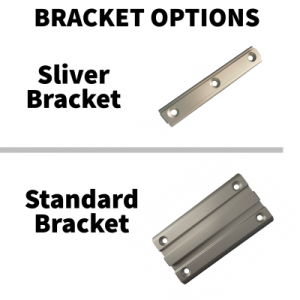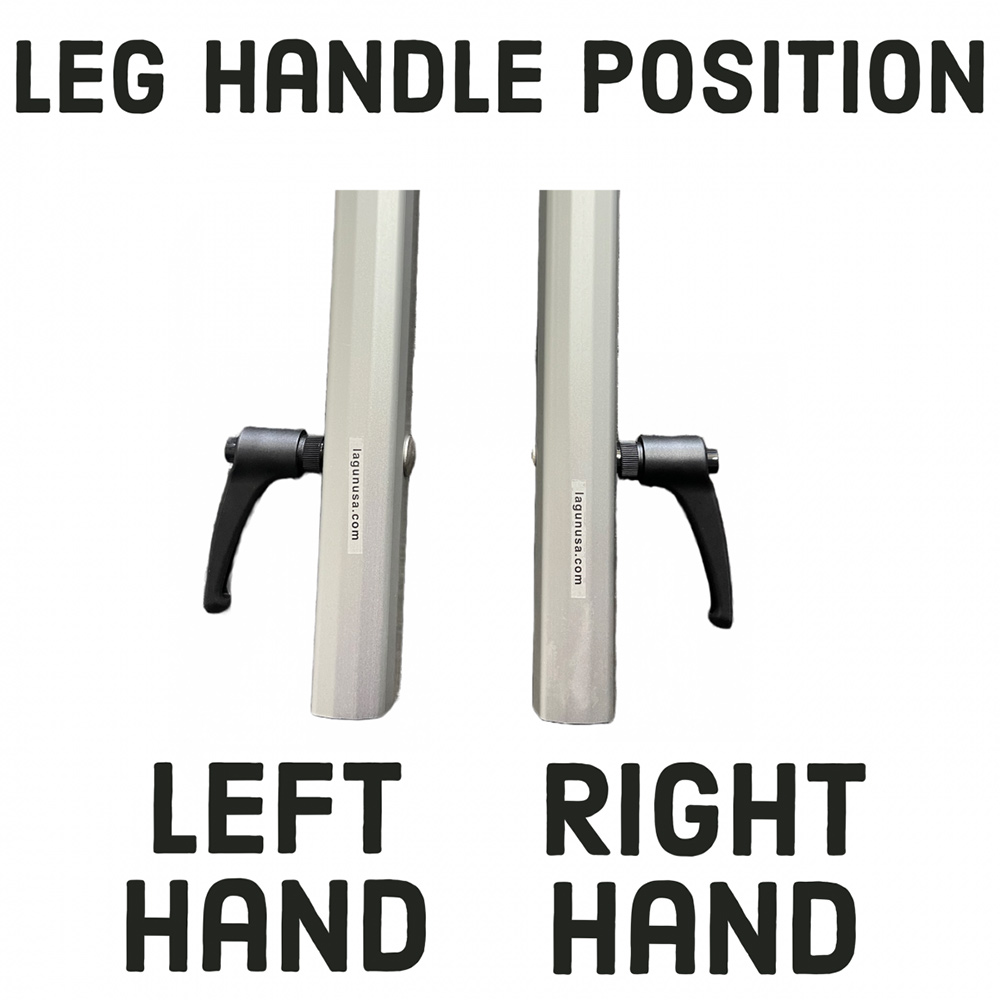Decisions, decisions, decisions. We’re often asked – which system do I need? This is a tough question to answer since we don’t know the structure or reinforcement areas of every year/make/model or whether or not a previous owner has made modifications. There isn’t one specific Lagun Table Leg system for every scenario or each model of RV/Van. The right system is the one that will function to provide you the best overall experience. When you’re trying to decide which system to purchase, here are some questions to ask yourself:
-
- Where are possible options to mount the bracket?
- How much room do I have for the leg?
- What do I want the system to be able to do?
- Do I want a multi-function table I can use in more than one place?
The most important thing is bracket placement as the system is only as stable as the bracket installation. Deciding which leg style to use depends on where you mount the bracket. Leg style selection plus picking the right height to install the bracket is crucial for how the Lagun Table Leg system will function for your specific situation. Here are some other things to consider when deciding where to install the bracket:
-
- The bracket must be installed on a solid vertical surface. A piece of paneling or fiberglass would not be sufficient.
- If mounting the bracket flush to the vertical surface, you will need to shim the bracket out at least 1” to allow the arm to swivel. There is 7/8” overlap at the arm & leg connection point & if you install the bracket flush to the wall, there will not be enough clearance for the arm to pivot.
- At least 1” of the leg groove must be tightened onto the bracket. The more of the leg on the bracket, the more stable the system. This is something to consider when deciding what height to install the bracket.
- Since the Lagun Table Leg system is not mounted to the floor, how far you choose to mount the bracket above the floor line will add to your overall table system height.

There are 2 Bracket Types to Choose From:
Standard Bracket
Sliver Brarcket
Both bracket types work with any leg style. Regardless of which bracket is used, the weight limit and function of the table leg system does not change. When deciding between the two options, think about where you will be installing the bracket. How much surface area there is – will there be room to install a standard bracket?
The standard bracket is 3 ½” wide vs. the sliver bracket that is only 1 3/16” wide. Both brackets are 6 11/16” long. Do you like the look of the bracket showing or would you rather have it hidden behind the leg? Some customers prefer the look of the sliver bracket, as it is “invisible” behind the leg.

There are 3 Leg Styles to Choose From:
Standard Leg
Double-Handled Leg
Longer Leg
Let’s take a look at their features:
Standard Leg– The most common type.
- From the bottom of the leg to the top of the table mounting plate is 23”. This measurement does not include the thickness of the tabletop.
- The slotted groove length is 11 ½”. This means you can adjust the leg 6” up or 6” down.
Double-Handled Leg– Allows more adjustment range.
- From the bottom of the leg to the top of the table mounting plate is 23”. This measurement does not include the thickness of the tabletop.
- This leg is the same length as the standard leg.
- This slotted groove on this leg is 17 ½” (6” longer than the standard leg). This means the leg can be adjusted 6” up or 11 ½” down.
Longer Leg– Provides more height.
- From the bottom of the leg to the top of the table mounting plate is 31”. This measurement does not include the thickness of the tabletop.
- This leg is 8” longer than the standard leg.
- This leg has the same slotted groove length of the standard leg (11 ½”). This means you can adjust the leg 6” up or 6” down.

The leg also allows a handle position choice between Left Hand or Right Hand. This option only refers to which side of the leg the handle is located. It does not change the function of the system and has nothing to do with which side of your van/RV you will be installing your system. When making this choice, you want to factor the location of the leg and whether vertical adjustments can be made without the handle bumping into objects, potentially breaking the handle. Or if you are installing the table leg system in a corner, it may be more convenient to have the handle on one side of the leg compared to the other.

